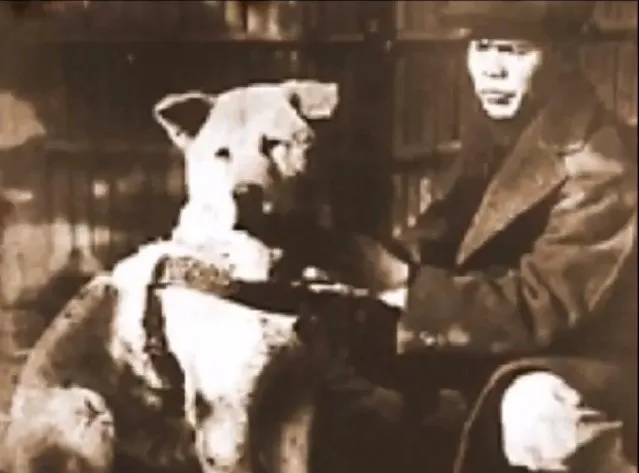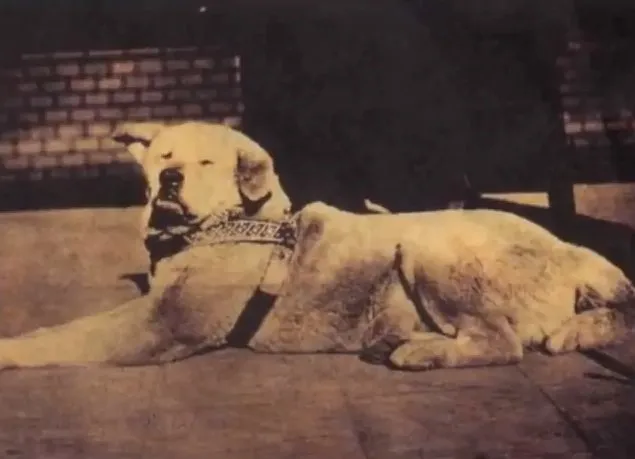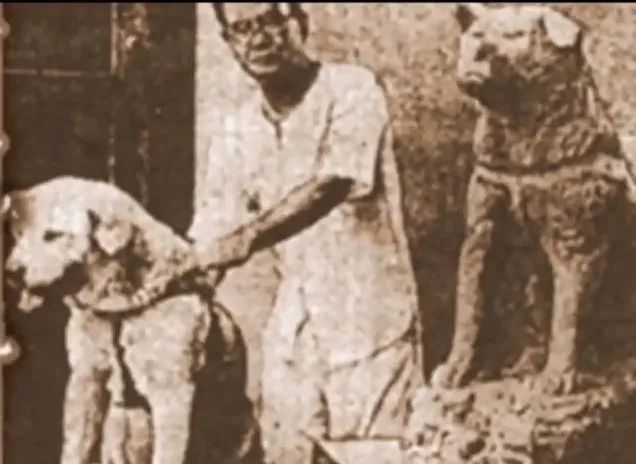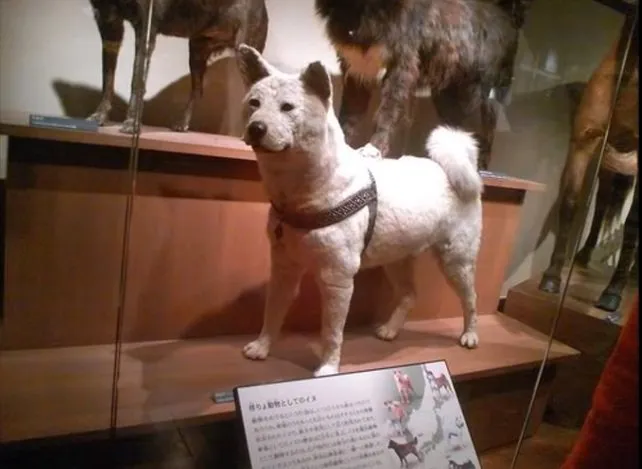Have you ever been deeply moved by a Dog Real Story Movie, a film that captures the essence of unwavering loyalty and devotion? The tale of Hachiko, the Akita dog, transcends cultural boundaries, inspiring not one, but multiple movie dog based on true story adaptations that continue to touch hearts worldwide. This incredible narrative originated in Japan, where Hachiko became a national symbol, his bronze statue a poignant landmark at Shibuya Train Station in Tokyo. His story exemplifies the profound bond between humans and their canine companions, proving that some friendships are truly eternal, even beyond life itself.
This article delves into the factual account of Hachiko’s life, the impact he had on a nation, and how his remarkable loyalty was immortalized on the silver screen, solidifying his place as the subject of perhaps the most famous hachiko movie real dog story ever told. Prepare to explore a true story that defines the very meaning of faithfulness.
The Genesis of a Legend: Hachiko’s Early Life
The story begins in Japan with Professor Hidesaburō Ueno, an agricultural science professor at The University of Tokyo, who harbored a long-standing desire for a purebred Japanese Akita dog. His search concluded in Odate City, Akita Prefecture, where Hachiko was born on November 10, 1923. The Akita puppy, a descendant of an Akita father named Oshinai and a mother named Goma, was purchased by Professor Ueno for ¥30, a significant sum at the time.
Hachiko’s journey to Tokyo was arduous, a 20-hour train ride that left the puppy frail upon arrival on January 15, 1924. Professor Ueno and his girlfriend, Yae, diligently nursed the young Akita back to health over the next six months. The professor affectionately named his new companion “Hachi,” meaning “eight” in Japanese—a number considered lucky. From that moment, a profound friendship blossomed. Professor Ueno cherished Hachi like a son, and the two became inseparable, their bond growing stronger with each passing day.
 An old photograph capturing Hachiko with his devoted owner, Professor Ueno
An old photograph capturing Hachiko with his devoted owner, Professor Ueno
As Hachi matured, a daily ritual began. Each morning, he would accompany Professor Ueno to Shibuya Train Station, seeing him off to work. In the afternoon, Hachi would faithfully return to the station, waiting patiently to greet his beloved owner upon his return. This routine was a testament to their deep connection, a daily display of a dog’s profound attachment.
The Unbreakable Promise: Hachiko’s Enduring Vigil
Tragically, this heartwarming routine was shattered on May 21, 1925. Hachi, then only a year and four months old, arrived at Shibuya Station as usual, awaiting Professor Ueno’s return. However, his master never appeared. Professor Ueno had suffered a sudden and unexpected cerebral hemorrhage while at work, passing away at the age of 53.
Despite the devastating loss, Hachi’s loyalty remained undeterred. He moved in with Kozaburo Kobayashi, a former gardener for the Ueno family, but his daily pilgrimage to Shibuya Train Station continued. For the remainder of his ten-year life, Hachi faithfully appeared at the station every afternoon, precisely when his master’s train was due, patiently waiting for a reunion that would never come. Professor Mayumi Itoh, in Hachiko’s biography, poignantly describes, “In the evening, Hachi stood on four legs at the ticket gate and looked at each passenger as if he were looking for someone.”
 The faithful Hachiko waiting patiently for his master at Shibuya Train Station
The faithful Hachiko waiting patiently for his master at Shibuya Train Station
Hachi’s unwavering vigil, however, was not without hardship. Initially, he faced mistreatment from some pedestrians, station staff, and even children who didn’t understand his profound grief and loyalty. This harsh reality changed dramatically when his story caught the attention of a major Japanese newspaper. In 1932, a reporter from the Japanese Daily published Hachi’s tale, transforming him into a national celebrity. People began to affectionately call him “Chuken-Hachiko,” meaning “Hachiko – the faithful dog,” a title that perfectly encapsulated his spirit.
His story resonated deeply, inspiring people across Japan and beyond. Visitors flocked to Shibuya Train Station to witness Hachiko’s incredible devotion firsthand and offer him treats. He became a cherished hero, a living embodiment of love, loyalty, and unwavering commitment. Hachiko continued his daily wait for nine years, nine months, and 15 days, until his own peaceful passing on March 8, 1935, at the age of 11. Even today, he stands as a powerful symbol of these noble virtues, a reminder of the extraordinary capacity for love found in a canine companion.
Hachiko’s Legacy: Statues and Memorials
Hachiko’s enduring story has been commemorated in various forms across Japan, ensuring his legend lives on. There are currently five statues and monuments dedicated to him in Tokyo alone.
The Iconic Shibuya Station Hachiko Statue
The most famous and frequently visited tribute is the bronze statue located in front of Shibuya Station. Erected in 1934 by Japanese artist Teru Andō, the original statue was unveiled in a grand ceremony, with Hachiko himself present as the guest of honor. This statue became a popular meeting point, especially for young Japanese. Sadly, the original statue was melted down for metal during World War II. The current statue, a replica created in 1948 by Takeshi Ando (the original artist’s son), continues to draw crowds. The exit at Shibuya Station where the statue stands is even named “Hachikō-guchi,” or “The Hachikō Entrance/Exit.”
 The revered bronze statue of Hachiko, a popular meeting spot at Shibuya Station
The revered bronze statue of Hachiko, a popular meeting spot at Shibuya Station
Every year on March 8, the anniversary of Hachiko’s death, a memorial ceremony is held at Shibuya Station, honoring his legacy of love and loyalty. The 2023 ceremony was particularly significant, marking what would have been Hachiko’s 100th birthday.
Hachiko Mosaic at Shibuya Station
On the wall of Shibuya Station, a large and beautiful mosaic artwork titled “Hachiko Family” depicts Hachiko happily playing with his parents and siblings. Created by Japanese artist Ryutaro Kitahara and completed in March 1990, this mural offers a joyful representation of Hachiko’s life. A poem by Kitahara Ryutaro, “Let’s Meet in Front of the Mural,” accompanies the artwork, reflecting on the station as a place of greetings, goodbyes, happiness, and sadness, where people connect and feel the joy of living.
The Preserved Hachiko at the National Museum of Nature and Science
After his passing, Hachiko was preserved due to his immense symbolic importance in Japan. Today, you can visit and see the stuffed Hachiko at the National Museum of Nature and Science in Ueno, Tokyo, a unique way to connect with this historical canine figure.
 The preserved Hachiko display at the National Museum of Nature and Science in Tokyo
The preserved Hachiko display at the National Museum of Nature and Science in Tokyo
Hachiko & Professor Ueno Reunion Statue at the University of Tokyo
At the University of Tokyo, a poignant bronze statue captures Hachiko’s joyous reunion with his beloved owner, Professor Hidesaburō Ueno. This statue, erected on March 9, 2015, on the 80th anniversary of Hachiko’s death, was crafted by Japanese artist Tsutomo Ueda. It depicts Hachiko jumping to greet Professor Ueno at the end of a workday, a heartfelt scene of their enduring bond. This particular statue often evokes a strong emotional response, symbolizing a reunion that never happened in life but is beautifully rendered in bronze.
Adjacent to this statue, a small museum houses articles, photos, and even Hachiko’s autopsy report, which revealed he died of terminal cancer and a filaria infection. Interestingly, four yakitori skewers were found in his stomach, though they were not the cause of death. His liver, heart, and lung are also on display, providing a detailed look into his physical history.
Hachiko Monument at Professor Ueno’s Grave
While Hachiko’s fur was preserved for the museum, his remains were cremated, and his ashes were buried alongside his cherished friend, Professor Ueno, in Aoyama Cemetery in Minato, Tokyo. A monument dedicated to Hachiko stands beside his owner’s tomb, a final testament to their eternal bond.
The Cinematic Portrayal: Hachiko as a Dog Real Story Movie
The remarkable true story of Hachiko has captivated audiences beyond Japan, making it a compelling subject for a dog real story movie. His tale of undying loyalty resonates universally, illustrating the profound connection between humans and animals.
Japanese Adaptation: Hachiko Monogatari (1987)
The first major cinematic adaptation of Hachiko’s story was the Japanese film “Hachiko Monogatari,” released in 1987. This movie sensitively portrayed the life of Hachiko and his unbreakable bond with Professor Ueno, touching the hearts of Japanese audiences. It brought the beloved national hero’s story to a wider public through the medium of film, solidifying his place in popular culture. For those interested in the original interpretation, this film provides a faithful and emotional account.
Hollywood Remake: Hachi: A Dog’s Tale (2009)
In 2009, Hollywood produced its own version, “Hachi: A Dog’s Tale,” starring Richard Gere as Professor Parker Wilson (the Americanized version of Professor Ueno). This movie about an akita dog brought Hachiko’s story to a global audience, becoming an international phenomenon. Filmed in Rhode Island, USA, the movie beautifully captured the essence of Hachiko’s loyalty, often leaving viewers in tears. A statue of Hachiko was also erected in Woonsocket Depot Square, Rhode Island, at the “Bedridge” train station featured in the film, mirroring the original Shibuya landmark. If you are looking for an emotional dog real story movie that profoundly impacts viewers, “Hachi: A Dog’s Tale” is a must-watch, though be prepared for a powerful and tear-jerking experience.
These cinematic portrayals, both Japanese and American, have cemented Hachiko’s status as a worldwide symbol of loyalty and unconditional love. They highlight why stories like Hachiko’s, often featuring a sled dog movie true story or a balto movie true story narrative, continue to resonate deeply with audiences who appreciate the extraordinary bonds forged with their pets.
Beyond the Screen: Books and Merchandise
The enduring appeal of Hachiko’s story extends beyond films and statues to various books, offering deeper insights into his life and impact. These literary works provide detailed accounts and reflections on his unwavering devotion, allowing readers to explore the nuances of this celebrated narrative. Additionally, merchandise featuring Hachiko, such as adorable Akita teddies, speaks to the public’s affection for this loyal canine. These items serve as tangible reminders of a story that continues to inspire and comfort countless dog lovers.
Experiencing Hachiko’s Legacy in Tokyo
For those moved by Hachiko’s story and its cinematic adaptations, a visit to Tokyo offers a unique opportunity to connect with his legacy. The city is rich with sites that commemorate this faithful dog. Be sure to visit the iconic Hachiko Statue at Shibuya Train Station, a bustling landmark and popular meeting spot. Further insight can be gained by visiting the monument of Hachiko beside Professor Ueno’s tomb in Aoyama Cemetery, a poignant site reflecting their eternal bond. And for a truly unique experience, visit the National Museum of Nature and Science in Ueno, where Hachiko himself is preserved and on display. These locations offer a tangible connection to one of the most heartwarming dog real story movies and the loyal dog that inspired it all.
Conclusion
The story of Hachiko is far more than just a tale about a dog; it is a timeless narrative of unconditional love, profound loyalty, and unwavering devotion. From his daily vigil at Shibuya Station to his immortalization in bronze and on screen as a compelling dog real story movie, Hachiko has become a global icon. His legacy reminds us of the extraordinary bonds we share with our pets and the deep emotional connections that can transcend even death. Hachiko’s story continues to inspire, teaching us the profound value of faithfulness and the simple, yet powerful, love of a dog.
The enduring popularity of films like “Hachi: A Dog’s Tale” is a testament to the universal appeal of such heartfelt canine narratives. Hachiko truly embodied the spirit of “man’s best friend,” and his memory continues to enrich our understanding of loyalty and companionship. We encourage you to delve deeper into his story, whether through film, literature, or by visiting the sites that honor his memory in Japan.
